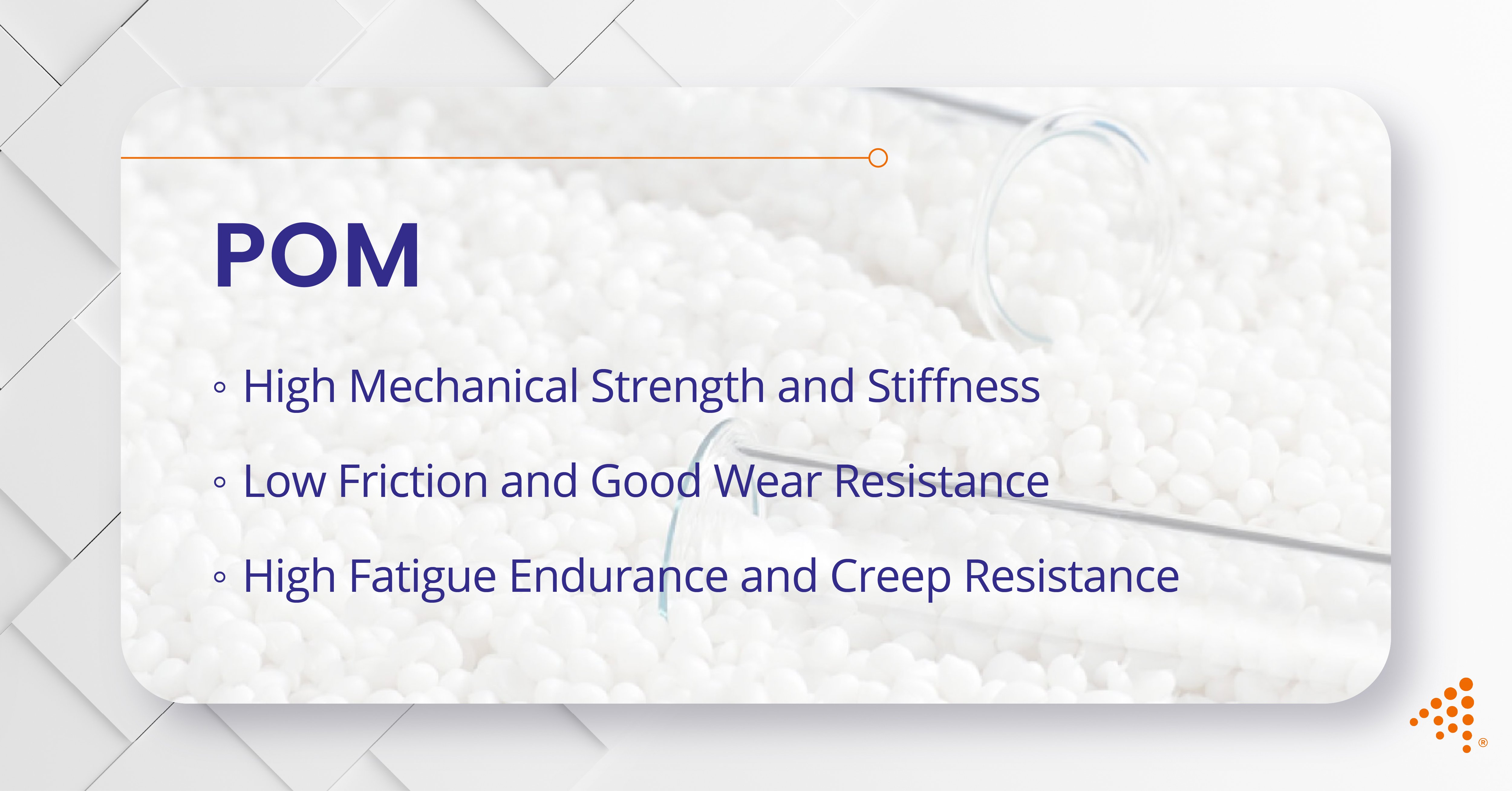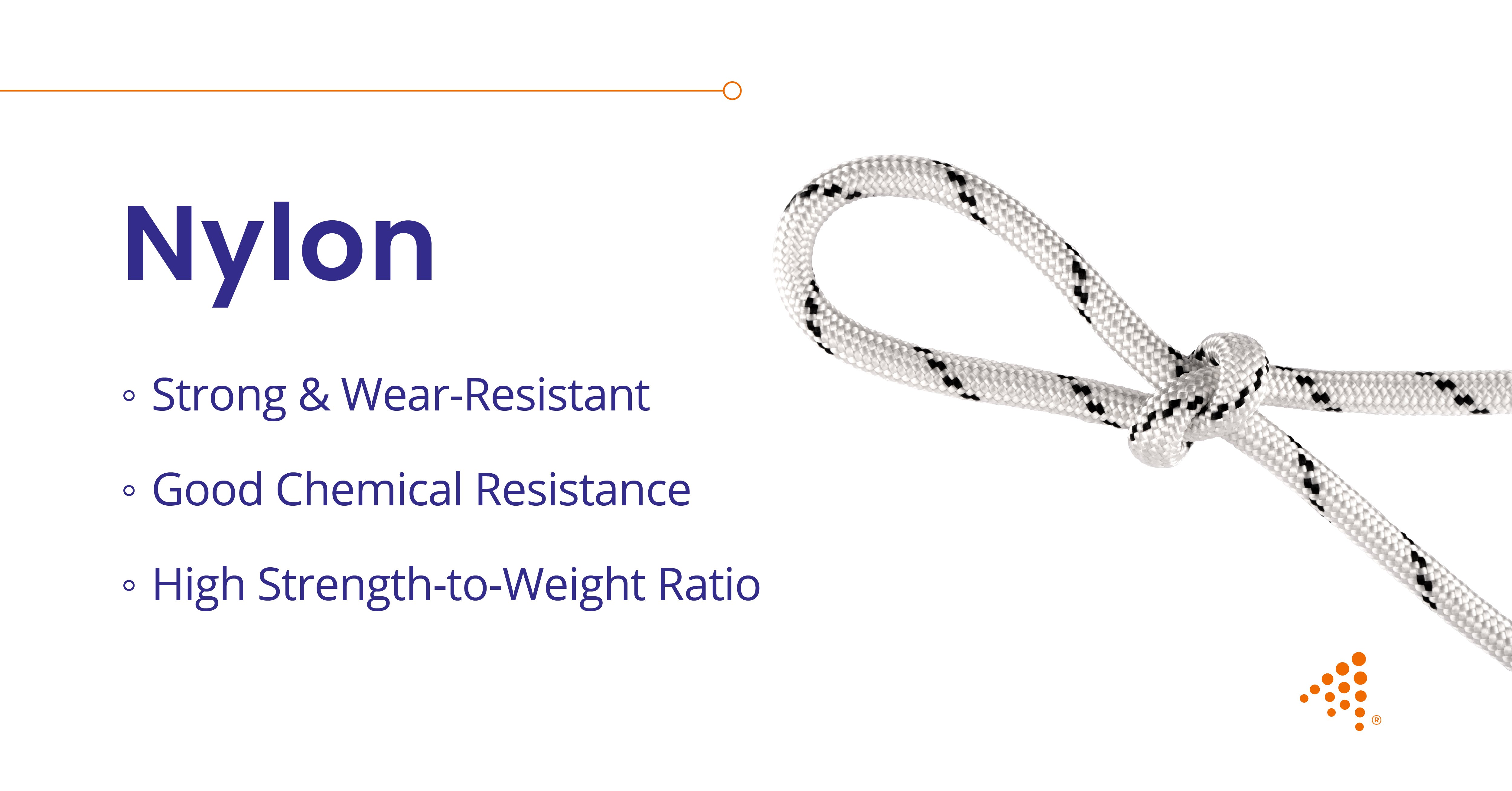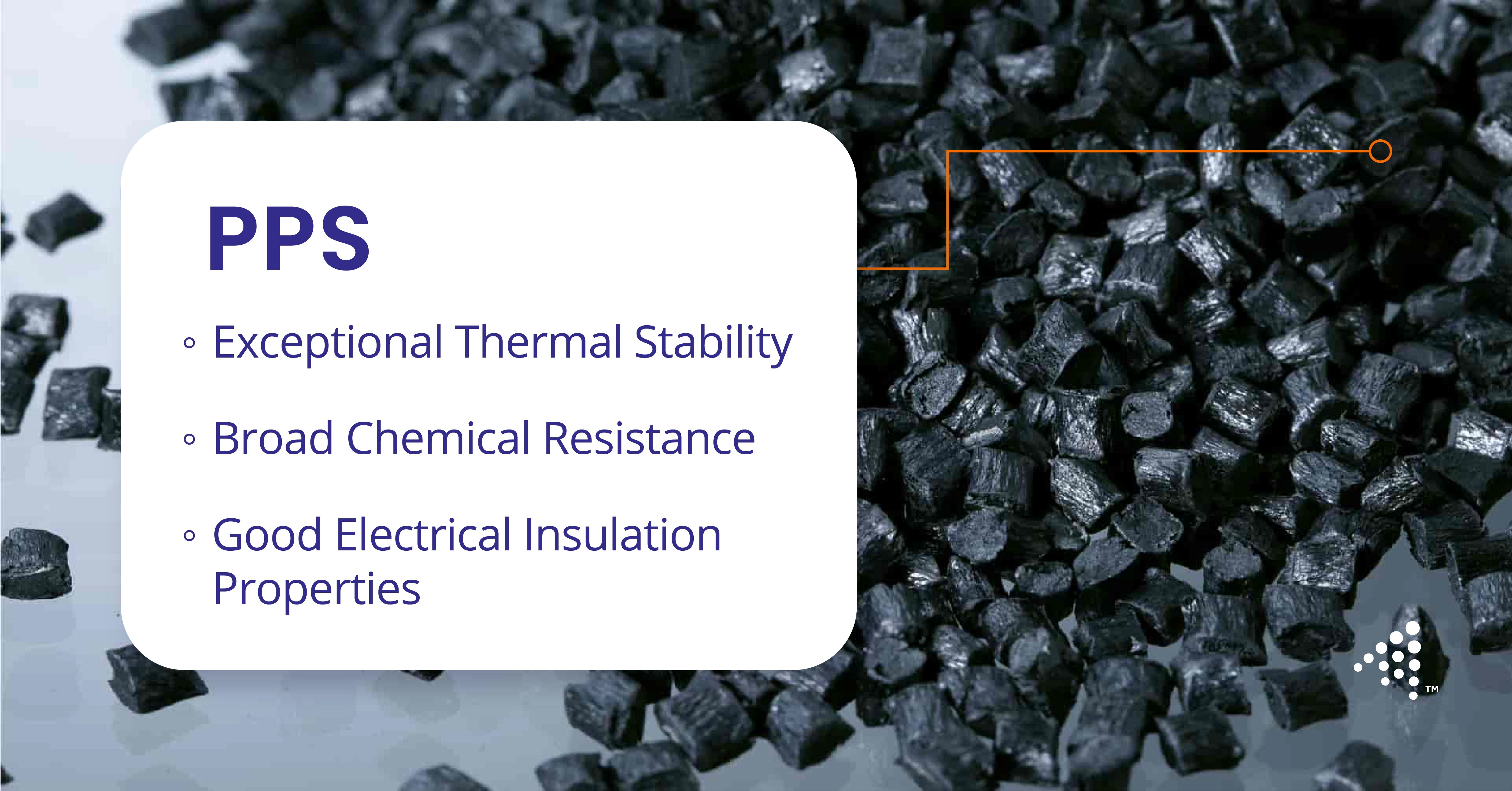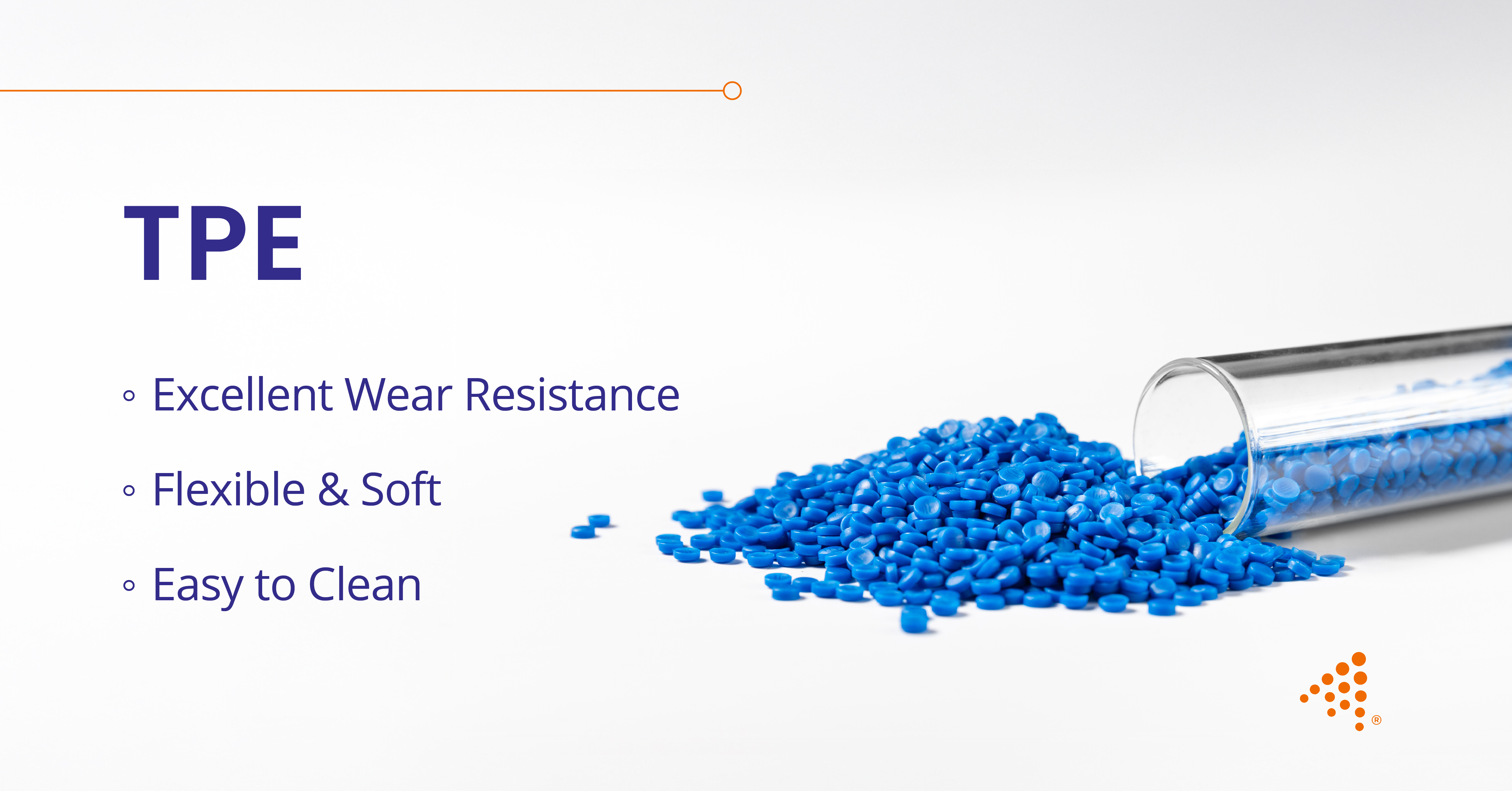Nylon (Polyamide): Durable and Versatile for Many Applications
Nylon (Polyamide): A Tough, Durable Resin for a Variety of Uses
5 min read
Nick Erickson : Jul 7, 2025 10:06:00 AM

Polyoxymethylene (POM), commonly known as acetal or polyacetal, is a high-performance engineering thermoplastic celebrated for its impressive combination of stiffness, strength, low friction, and dimensional stability. It serves as a reliable material choice for manufacturing precision components across various demanding industries, including automotive, industrial machinery, consumer electronics, and medical devices.
POM possesses a unique set of properties that make it suitable for applications requiring durability and precision. Its semi-crystalline structure contributes significantly to its mechanical performance and resistance to environmental factors, making it ideal for precision manufacturing services.
POM exhibits high tensile strength and flexural modulus, meaning it can withstand significant loads without deforming or breaking. This inherent rigidity makes it an effective material for parts that require structural integrity and load-bearing capacity, maintaining shape under stress better than many other thermoplastics. Both homopolymer (POM-H) and copolymer (POM-C) grades offer robust mechanical performance, though POM-H generally provides slightly higher strength and stiffness for custom manufacturing solutions involving structural components..
One of POM's most defining characteristics is its naturally low coefficient of friction and high resistance to wear, especially in sliding mechanisms. This inherent lubricity allows parts made from POM, such as gears and bearings, to operate smoothly with minimal resistance and wear over long periods, even without external lubrication. This makes it ideal for moving mechanical parts where reducing friction and extending service life are crucial.
Compared to other engineering plastics like nylon, POM absorbs very little moisture from the environment. Its low water absorption rate (typically around 0.2%) means that components maintain their size and shape accurately, even when exposed to humid conditions or submerged in water. This dimensional stability is critical for precision parts manufactured through processes like injection molding, where tight tolerances must be maintained throughout the product's lifecycle.
POM offers good resistance to a wide array of chemicals, including many organic solvents, fuels, oils, greases, alcohols, and weak acids or bases. Copolymer grades (POM-C) generally exhibit broader chemical resistance, particularly towards hydrolysis in hot water (up to 185°F (85°C)) and alkaline solutions (pH 4-13), compared to homopolymer grades (POM-H), which are better suited for environments with a pH range of 4-9. This resilience allows POM parts to function reliably in chemically challenging environments.
POM demonstrates remarkable resistance to fatigue under cyclic loading and maintains its structural integrity under sustained stress (creep resistance). This means POM components can endure repetitive mechanical actions and long-term loads without significant deformation or failure, making it suitable for springs, snap-fit connectors, and other parts subjected to continuous or repeated stress.
POM possesses good dielectric strength and volume resistivity, making it a suitable electrical insulator for low-frequency, low-voltage applications. While not typically used for high-power electrical components, its insulating properties are valuable in housings, connectors, and switches where electrical isolation is needed alongside mechanical performance.
Explore our Design and Manufacturing Services to discover how Aprios can bring precision-engineered POM components to life.
With its balance of strength, precision, and resistance properties, POM is used across multiple industries in high-performance applications, especially in medical injection molding and automotive component manufacturing.
In the automotive sector, POM is frequently used for fuel system components (like fuel pump housings and level sensors), interior mechanisms (seatbelt components, window lift mechanisms, door handles), small gears, and clips. Its resistance to fuels and solvents, coupled with its strength and wear resistance, makes it reliable for these demanding under-the-hood and interior uses.
The biocompatibility, purity, and sterilizability of specific POM grades make it valuable in the medical field. It's used in components for drug delivery devices like insulin pens and inhalers, handles for surgical instruments, parts for dialysis machines, and various diagnostic tools. The precision attainable through medical injection molding with POM is crucial for these life-critical devices.
POM's natural lubricity, high strength, and wear resistance make it a go-to material for industrial machinery components such as gears, bearings, bushings, rollers, conveyor chain links, and valve seats. These parts benefit from POM's ability to operate smoothly and reliably with minimal wear, reducing maintenance needs.
POM finds its way into numerous consumer products, including appliance components (gears in food processors, parts in coffee makers), zippers, buckles, pens, toy parts, and plumbing fixtures like shower heads and valve cartridges. Its durability, pleasant aesthetics, and resistance to water and common household chemicals contribute to its use here.
Within the electrical and electronics industries, POM is used for insulators, connectors, coil bobbins, switch components, and housings for small devices. Its good electrical insulation combined with mechanical toughness provides reliable performance in these settings.
Read More About Maximizing Mold Longevity with Aprios' Maintenance Strategy
While standard POM grades offer a strong performance profile, various additives and fillers can be incorporated to enhance specific properties or tailor the material for particular end-use requirements, including specialized injection molding processes.
Adding glass fibers or mineral fillers significantly increases POM's stiffness, strength, and heat deflection temperature. Glass-filled grades offer enhanced rigidity and dimensional stability under load, suitable for structural components that require higher mechanical performance than unfilled POM can provide.
Although POM is naturally slippery, incorporating internal lubricants like Polytetrafluoroethylene (PTFE), silicone oil, or molybdenum disulfide (MoS2) can further reduce the coefficient of friction and improve wear resistance. These modified grades are ideal for demanding sliding or rotating applications requiring ultra-low friction.
Standard POM has poor resistance to prolonged ultraviolet (UV) light exposure. UV stabilizers can be added to the formulation to protect the polymer structure from degradation, preserving its mechanical properties and appearance for outdoor applications or environments with significant UV exposure.
POM is naturally opaque white but can be easily compounded with pigments to achieve a wide variety of opaque colors. Color is often used for branding, aesthetic purposes, or functional coding in assemblies. Heavy-metal-free colorants are available for compliance with environmental and safety regulations.
To improve toughness, especially at lower temperatures where POM can become more brittle, elastomeric impact modifiers can be added. These enhance the material's resistance to fracture upon impact, broadening its suitability for applications requiring greater durability.
For applications requiring static dissipation or electrical conductivity, fillers like carbon black, carbon fibers, or stainless steel fibers can be incorporated into POM. These additives modify the electrical properties, making POM suitable for components in sensitive electronic devices or environments where static discharge is a concern.
Read More About Ensuring Consistent Quality with Tailored Quality Control Plans
Despite its many advantages, POM has limitations that designers and engineers must consider during material selection.
As mentioned, unmodified POM degrades under prolonged exposure to UV radiation, leading to discoloration, surface chalking, and a reduction in mechanical strength. This limits its use in outdoor applications unless UV-stabilized grades are specified.
POM possesses low surface energy, making it inherently difficult to bond using conventional adhesives or to paint without specialized surface preparation techniques like chemical etching, plasma treatment, or flame treatment. This can add complexity and cost to assembly processes requiring adhesion or coating.
While generally resistant to many chemicals, POM is susceptible to attack by strong acids (like nitric, sulfuric, or hydrochloric acid) and strong bases (especially POM-H in alkaline environments above pH 9). Exposure can lead to chemical degradation and loss of properties. Compatibility must be verified for applications involving aggressive chemical contact.
POM is flammable and will continue to burn after ignition, releasing formaldehyde fumes. It does not typically meet stringent flammability ratings without the addition of flame retardants, which can sometimes compromise other properties. This limits its use in applications with strict fire safety codes.
POM exhibits relatively high and non-uniform mold shrinkage (around 2%) during injection molding. This requires careful mold design and process control to achieve tight dimensional tolerances. Post-molding shrinkage can also occur over time.
Contact Aprios today for tailored solutions that meet your performance, cost, and durability goals.
POM is an excellent choice when an application demands a combination of high stiffness, exceptional dimensional stability (especially in wet environments), low friction, good wear resistance, and high fatigue endurance. Its ability to be molded into complex, high-precision parts makes it particularly valuable for mechanical components like gears, bearings, clips, and levers, as well as intricate device housings. The availability of medical grades suitable for sterilization further expands its utility in healthcare. For applications where reliable mechanical performance, longevity, and precision are paramount, particularly in injection molding scenarios and for custom manufacturing services, POM often provides an optimal balance of properties and processability.
Contact Aprios today for expert guidance on material selection and manufacturing strategies tailored to your performance, compliance, and budget needs.
You can also view our Material Selection tool.

Nylon (Polyamide): A Tough, Durable Resin for a Variety of Uses

Polyphenylene Sulfide (PPS) is a high-performance, semi-crystalline engineering thermoplastic known for its remarkable thermal stability, chemical...

Thermoplastic elastomer (TPE)/thermoplastic vulcanizate (TPV) combines the benefits of rubber with the processability of thermoplastics, making it an...